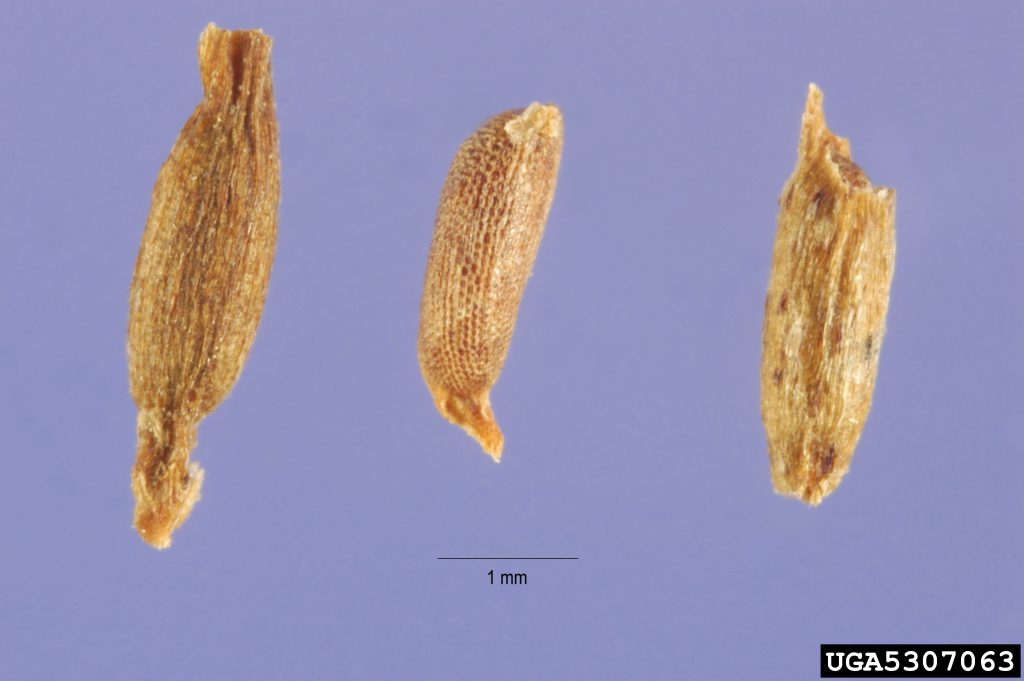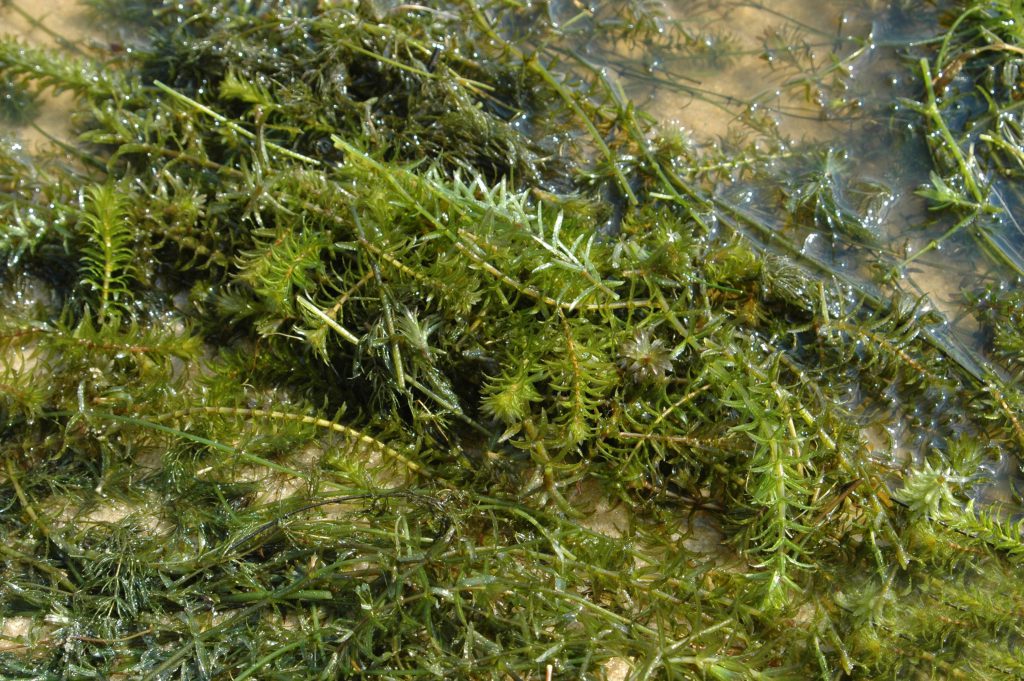Scientific name: Hydrilla verticillata
What Is It?
Hydrilla (Hydrilla verticillata) is an aquatic plant native to Asia, Africa, and Australia. It was introduced to Florida in the 1950s through the aquarium trade. It is a sturdy weed that reproduces by seeds, plant fragments, tubers, and turions (a type of bud). It is considered one of the worst aquatic weeds in the country.
Is It Here Yet?
Yes. Hydrilla was found in Pipe and Lucerne Lakes, but thanks to the vigilance of private contractors, the Washington State Department of Ecology, King County, and the cities of Maple Valley and Covington, it was eradicated in 2006. Continued monitoring has not found any regrowth. Hydrilla has been found in a tributary of the Snake River in Idaho, which feeds into the Columbia River.
Why Should I Care?
Hydrilla can form dense stands that clog lakes, rivers, reservoirs, and irrigation canals. It chokes out native aquatic plants, altering predator-prey relationships among fish and other aquatic animals. The dense mats decrease dissolved oxygen, increase the water temperature by absorbing sunlight, create mosquito breeding areas, and negatively affect recreation such as swimming, fishing, and boating. Once hydrilla is established, it can take millions of dollars to control each year and is difficult to eradicate.
How Can We Stop It?
Do not purchase, plant, or trade this species. Do not dump aquarium contents into Washington waters. Be sure to check boats, trailers, and motors before launching a boat to ensure there are no plant fragments that could be spread to waterways. Hydrilla also is on Washington’s Noxious Weed Seed and Plant Quarantine list, meaning it is prohibited to transport, buy, sell, offer for sale, or distribute hydrilla plants, plant parts, or seeds.
What Are Its Characteristics?
- Pointed, bright leaves about 1-5 millimeters wide and 60-20 millimeters long.
- Leaves grow in whorls of 3 to 10 around the stem; 5 leaves per whorl is the most common.
- The leaves have a reddish midrib and small spines on edges and tips.
- The most reliable way to identify hydrilla is to look for small, white to yellowish, potato-like tubers attached to the roots, and white floating flowers.
How Do I Distinguish It From Native Species?
Hydrilla may be confused with a native plant, Elodea canadensis, or common waterweed. It also may be confused with Egeria densa, or Brazilian elodea, another invasive species in Washington. You can distinguish between these look-alike species by hydrilla’s tubers (off-white to yellowish, pea-like structures buried in the ground, 2/10 to 4/10 inch long). Common waterweed and Brazilian elodea do not have tubers. Additionally, hydrilla leaves have small spines on the edges, while common waterweed and Brazilian elodea have smooth leaf edges.
Additional Photographs



